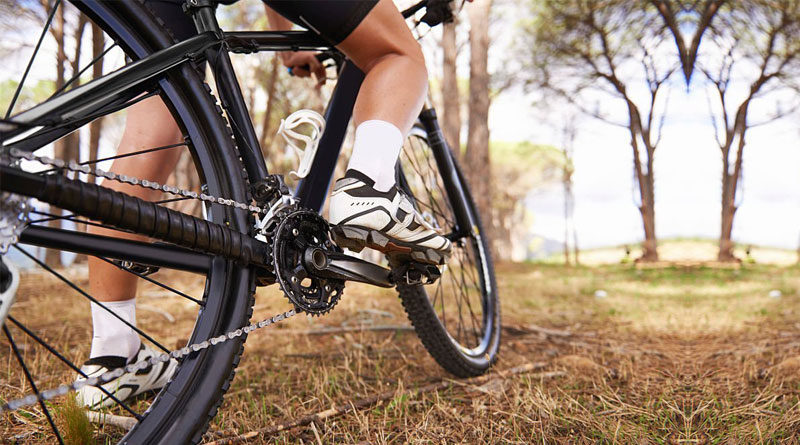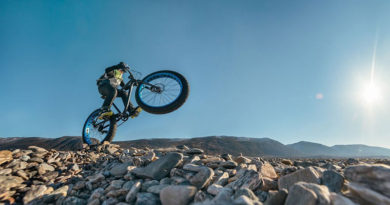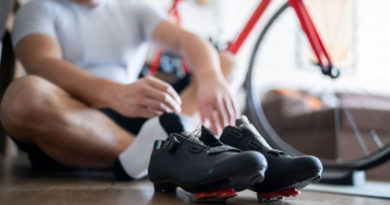Why Do Bike Pedals Slip Under Load?
There is nothing like a smooth bike ride where each rotation of the pedal makes you feel more liberated. But among the most common mechanical problems is the slipping of pedals under load. The betrayal you feel when you put in the extra effort to gain more speed only to find out that your pedals are slipping. There are many reasons for the pedals to slip. Some of these reasons require an easy fix while others may you to replace the whole drivetrain, an expensive and a time-taking process. This article discusses some of the most common reasons that make the pedals slip under load.
Lack of Maintenance
The most common reason for slipping pedals is a lack of maintenance. Riding causes the adjustments of the drivetrain to go off. People who don’t put in the time to maintain their bikes are often found complaining about slipping pedals or chains.
The component of the drivetrain most susceptible to maladjustment is the rear derailleur. If it is not adjusted properly, you would experience pedal slipping. The slipping of pedals is most likely the chain slipping because the adjustment of the derailleur is out. Misaligned derailleur pulleys caused by the B-tension screw or improper cable tension because the barrel adjuster setting is out are common causes of pedal slip.
Another reason for slipping pedals is the lack of lubrication on the chain. Now, you would wonder that an unlubricated chain should cause more friction so why would it slip? If anything, an overly lubricated chain should slip. Well, you are right…to some extent.
An unlubricated chain puts stress on the drivetrain components and causes the derailleur settings to go off. A dry chain also causes the chainrings, cassette cogs, and derailleur pulleys to wear out faster. The most telling sign of an unlubricated chain is the clicking sound the chain makes while riding. But if the chain makes a clicking sound while changing gears, then the derailleur needs adjustment. Pedal slip is most prominent during gear changes in these cases.
If you haven’t put in the time to maintain your bike lately, then perhaps, you should start paying more attention to your bike. You can take your bike to a bike shop for maintenance or do it yourself if you love doing mechanical work. Check out our guide on derailleur adjustments for a smooth riding bike.
You can use Kerosene oil or WD-40 for cleaning and degreasing the chain and the cassettes. But don’t use WD-40 as a lubricant. There is a lot of misinformation out there about using it as a lubricant. Drivetrain components are too fast-moving for WD-40. Use a proper lubricant for the chain. You don’t have to lubricate the cassette or the chainrings. A properly lubed chain is enough.
Worn out Parts
Let’s say you keep your bike well-maintained but you have started experiencing pedal slip lately. The second most common reason for pedal slip, if everything else is fine, is worn-out parts. If you have a chain or pedal slip after 2000 miles with proper maintenance, then the drivetrain has simply worn out.
Riding causes chain stretch over time. Chain stretch is just another term for a worn-out chain. You can check the bike chain with a chain checker tool in that case. A worn-out chain can also damage the teeth of the cassette cogs, derailleur pulleys, and chainrings. You should replace all the parts with teeth in them along with the chain. Otherwise, chances are high that the problem remains. New chain and old cogs or new cogs and old chain just don’t match. So, if you are replacing one, replace all.
Another worn-out part that causes the pedals to slip is the cable. The cables also stretch over time or the ends of the cable fray. As a result, the cable can lose a fair bit of tension which can cause multiple problems with gear shifts including pedal slip. But you should replace the drivetrain components before reaching the 2000-mile mark anyway.
Damaged Parts
You may experience pedal slip after damage to the components of the drivetrain of your bike. A crash or, perhaps, a hard blow from a rock. In any case, if you have broken cog teeth, a bent derailleur, or other damage, you can experience pedal or chain slip.
While the damage on the drivetrain is mostly visible at a glance, you should check for the bracket of the bike. If it is loose or damaged, it may be the reason for the pedal slip. Try rotating one pedal at a time. If the rotation is not stiff and there is play in the rotation you may need to tighten the bracket or replace it if it’s damaged.
Similarly, the freehub can also be damaged or worn out and can cause the chain to slip. Check to see if the freehub has a play. Replace it if necessary. A torn or damaged cable can also cause pedal slip as the cable won’t have adequate tension. If your bike has internal cabling, then you would have to do some hard work to diagnose the problem. In some cases, the cable doesn’t account for a geometry change in the bike’s frame when the suspension compresses.
Mismatched Parts or Wrong Installation
Cycling companies are designing various types of parts to perform the same functions, just in different ways. You have to make sure the parts you are using in your bike fit together well and don’t cause any compatibility issues. Otherwise, you won’t be able to ride your bike completely or the bike would ride pathetic. A pedal slip would be among the many issues you would face then.
Riders who often change parts themselves without doing complete research often end up installing the parts wrong. For example, Some Shimano and SRAM systems have directional chains. There is only one correct way to install the chain so that a specific part of the chain sits on a specific part of the cog. Installing the chain wrong will cause problems with gear shifting as well as pedal slips.
Similarly, modern drivetrains require precise adjustments. Many top-end rear derailleurs require precise adjustment of the B-tension screw otherwise it will cause problems with the chain and shifting. Thankfully, you can look up a manual on the internet to make the right adjustment.
New Bike
If you have gotten a new bike, then you would experience pedal slip for some time in the beginning. You need to break in some components of the bike like the brakes and the gears. Until then you will face some minor issues. The cable requires some time to stretch and settle properly in the cable anchor. Until then, you may experience pedal slip. You may also face issues with gear shifting and chain slipping because the derailleur may not be properly adjusted or the derailleur experienced maladjustment during transport.
After the break-in period, which is about 200 miles, the derailleur needs a readjustment. If you are a new rider who has just gotten a bike, don’t try to readjust the derailleur by yourself. Usually, the bike shop calls you in after 1 or 2 weeks to tweak your bike. You should let the experts handle your bike.
Too Much Load
You can also experience pedal slip if you put too much load on the bike, especially, if the bike is new. Check the manufacturer’s guidelines about the maximum weight the bike can handle. Avoid putting a heavy load on the bike if it is brand new.
How to Avoid Pedal or Chain Slip?
The easiest way to avoid pedal or chain slip is to regularly inspect and maintain your bike. If you own a bike, you need to put in the time and effort to keep it running smoothly. A bike requires love just like a partner. Lube properly and regularly. Adjust the derailleur every 100-200 miles. Replace the worn-out parts immediately before they damage other parts of the drivetrain. If you keep your bike regularly maintained, then hopefully, you won’t have a slipping chain or pedal.
Conclusion
You need regular maintenance to keep your bike running smoothly. Lack of maintenance is the most common cause of pedal or chain slip. Loose cable, maladjusted derailleurs, and dry chain, all contribute to pedal slip. Worn-out or damaged drivetrain components are another reason for pedal slip. Make sure to replace the parts that are worn out or damaged before they damage other parts. A worn-out chain can put a lot of stress on the chainrings and cassette cogs and accelerate the wear on these parts. But if you have a new bike, you would face some issues in the beginning until the bike components complete their break-in period. So be patient.




